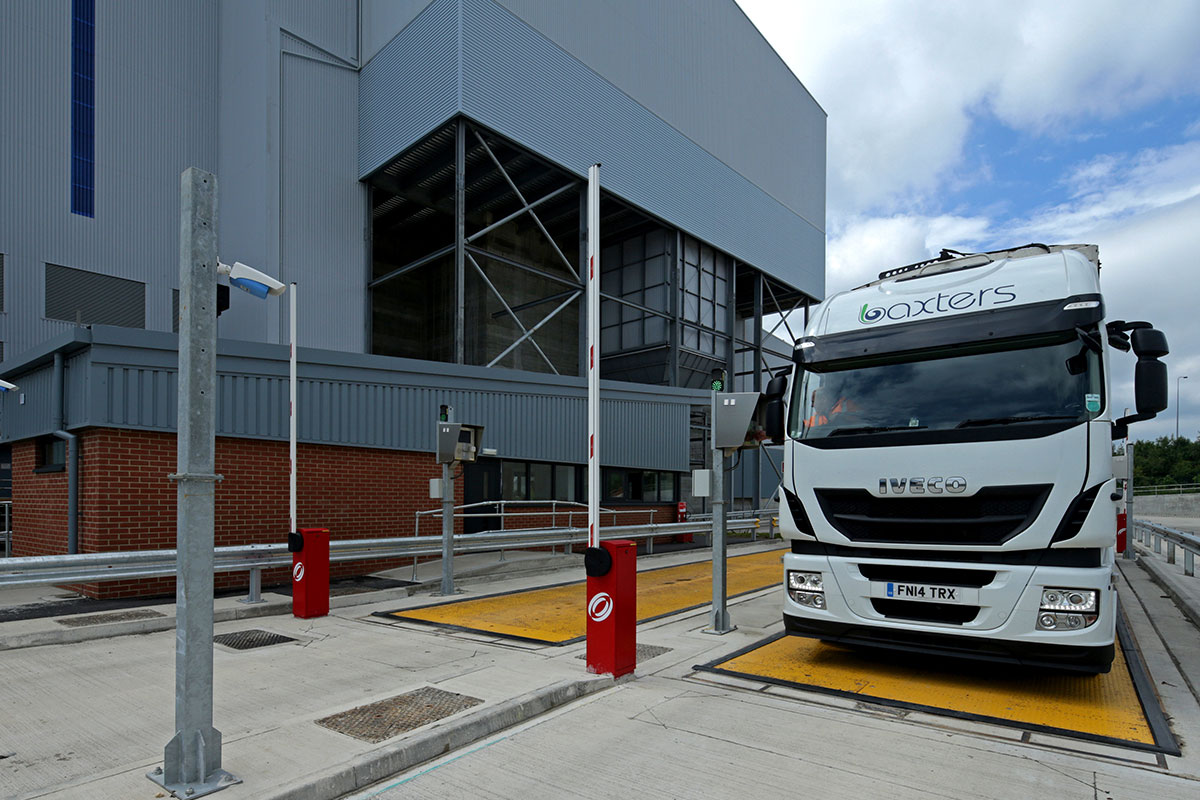Articles
Radio Frequency Identification vs Automatic Number Plate Recognition
Vehicle recognition technologies – RFID versus ANPR
Automated weighbridge systems are now used in a growing number of applications and the range of technologies used in these has increased over the past decade. A key part of these systems is automatic vehicle recognition, allowing controlled access for delivery and collection vehicles to specific site areas. This control capability provides advanced site security and also speeds up the weighing procedures. In parallel, recognition systems can control access for security gates and any bypass lanes used for non-weighed vehicles. Remote access capabilities also extend operating hours, removing the need for manned gatehouses in some applications.
At Weightron, we use two main technologies for vehicle recognition:
- Radio Frequency Identification (RFID) and
- Automatic Number Plate Recognition (ANPR)
The choice of system will depend on a range of factors and a comparison chart is provided below showing the Pros and Cons of each technology. In some applications, both technologies are used alongside each other.
Firstly let’s look at the basics of the two technologies.
RFID
RFID or the Radio Frequency Identification technology refers to a technology where data is encoded digitally in the form of RFID tags and a reader is used to detect this data through radio waves. RFID is used to automatically identify and track a diverse range of people and objects. Everyday examples include personnel entry into buildings, vehicle entry to car parks and vehicle tags used to identify and levy charges for vehicles using toll roads. RFID technology is therefore ideally suited for automated weighbridge systems. Typical working ranges vary from less than 100 mm up to 7 metres depending on frequency.
Typical RFID systems consist of three components:
- an RFID tag or smart card carried by the user
- an RFID reader and
- an antenna.
The RFID tags (or cards) contain an integrated circuit and an antenna, which are used to transmit data to the RFID reader. The tag reader interface then converts the radio waves to a digital signal that can be processed by the system computer. The system cross-references the data stored on the tag with its own database and if it matches, an applicable action can be granted. In a typical weighbridge system, this signal would operate a traffic barrier or traffic light, allowing the vehicle onto the weighbridge. RFID technology can incorporate various frequency levels that determine the reading range. The lower the frequency, the shorter the reader’s range. In-vehicle identification, the most common frequencies used are 125kHz (short-range) and 860 – 980 MHz (long-range).
ANPR
An ANPR camera automatically captures the vehicle license plate in real-time, compares it with a pre-defined list and then triggers appropriate actions such as opening a gate or barrier. ANPR technology has advanced significantly over the past decade and the latest cameras are easy to install and can provide up to 97% reading efficiency, even under poor operating conditions. (Earlier cameras relied on outdated FTP technology to analyse data from the camera).
The system software uses multiple images to take into account plate orientation and skew to mitigate errors and crosscheck for accuracy. To read the licence plate information, the ANPR adjusts the brightness and contrast of the image so the optical character recognition (OCR) or pattern recognition can easily identify the letters and numbers, which it converts to text data and sends to a central database.

| RFID | ANPR | |
| Cost | Lower initial install cost, but costs for the cards can be significant depending on the number of vehicles. (Cost break-even point approx. 150 – 200 vehicles)
|
About 4 or 5 times the initial cost of RFID, but once installed there are no ongoing costs |
| Ease of adding an additional authorised user | A new tag must be issued and registered each time a new user is added or a card is lost/replaced
|
New user number plate details can be easily added to the database |
| Usability | For short-range applications, drivers need to be able to present cards within a very short distance (<90 mm). Dual height readers may be required for different vehicles and additional readers are needed if left-hand drive vehicles visit the site | No need for any driver intervention. One install height is suitable for all types and sizes of vehicles, irrespective of left or right-hand drive configuration. By default, all vehicles have number plates
|
| On-going costs | Tags can be lost or damaged. They will probably need replacing every 2 – 3 years
|
The only one-off upfront cost |
| Reliability | Not affected by most environmental conditions | Can be problems reading dirty or damaged number plates |
| Range | 80 mm -7 m depending on frequency. Cost increases with range | 3-15 m |
| Site efficiency | >95% efficiency, but time-consuming delays can occur on-site if a driver forgets the card | >95% reading efficiency |